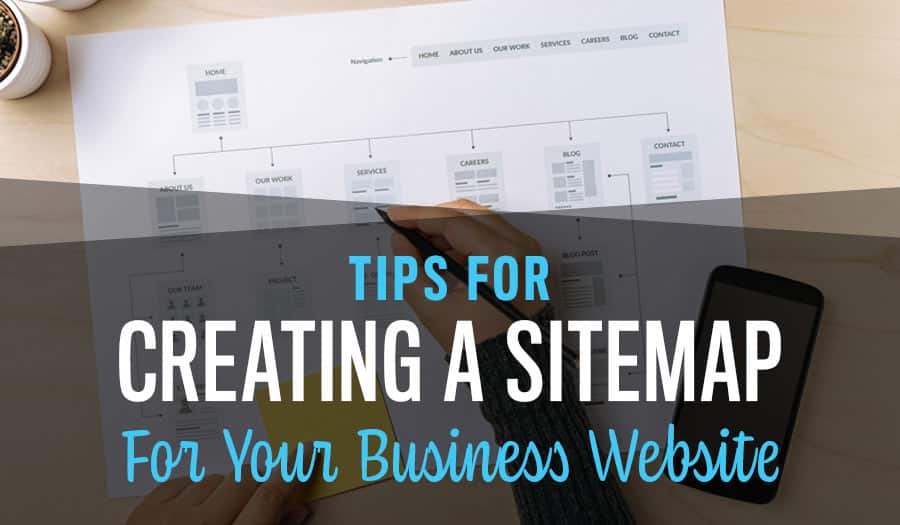A sitemap is an efficient and effective centralised planning tool that allows you to organise your content and clarify the pages that need to be on your site. When planning a new website design, a sitemap should be your first step, one that may save you both time and money in the long run.
Determining the structure of your website in advance before briefing your web designer is often a daunting task for business owners. You may wish to make an indexed sitemap (listing your site’s pages alphabetically), or a categorical sitemap (either a complete, comprehensive sitemap with classified links in all categories listed, or a restricted categorical sitemap – which is easier to view as only the links in specific categories are listed). To save time with your sitemap, consider using a visual sitemap generator.
Here are some simple questions you can ask yourself to determine what should be included in your sitemap and why you should take the time to create one:
Simple Tips For Creating a Sitemap For Your Business Website
- Determine the purpose of your site
- Don’t double-up
- Make it a team effort
- Streamline your conversion funnels
- Link from your Homepage
- Keep it consistent
1. Determine the purpose of your site
Know why your website exists, it’s purpose and what you want your website to achieve. Unfocused sites are often hard to navigate and deliver a poor user experience. Direct your users where you want them to go by using targeted, effective content and ensuring site navigation is user-friendly and uncomplicated.
2. Don’t double-up
Rather than duplicate your content, simply include a link on one page that directs your user to the information that appears on another. This makes updating your site far simpler, helps with SEO (and will save you money as well!).
Along with avoiding any double-up on content, try to keep your pages at around the 200 pages mark. This prevents overcrowding the links, which can make it difficult for your users to view. When too many pages appear in your sitemap, search engines can assume your sitemap is a link-farm and penalise you for it, even if it is not the case.
3. Make it a team effort
Your web designers, developers, copywriters, digital marketing team and your sales and marketing team should all be involved in creating your business website sitemap. As everyone is allowed input as to how they would like the website to perform, content creation and the website’s purpose and goals the sitemap may change to incorporate new ideas or suggestions. Again, changes at the sitemap change won’t cost you like changing your website while it is under construction can, so be sure to get everyone’s input early.
4. Streamline your conversion funnels
The fewer steps in your conversion funnels the less likely you are to have your visitors leave your site before completing their sale or following through on a call to action, such as completing sign-up. You can use your sitemap to minimise this process and ensure your funnel is as streamlined a process as possible.
5. Link from your Homepage
By linking your sitemap from the homepage of your website you ensure that search engine robots will visit all the pages listed as they generally start from the homepage and move down through the sitemap’s listed pages.
6. Keep it consistent
Ensure your sitemap’s design is consistent with the design of the rest of your website – attention to detail in every aspect of your website design tells your visitors a lot about your business.
When you don’t take the extra time to create a sitemap before building a new website, you may find your website ends up both cumbersome to use and laden down with extra pages. You risk ending up with a site clogged with duplicated content, difficult to navigate around and ultimately more complicated that it needed to be.
Your end users will thank you for the time you dedicate to perfecting your sitemap. Deciding what is necessary, and dumping what isn’t, is crucial before the design process begins – and can end up saving you both time and money!
If you would like to discuss your website’s layout or design with us, feel free to contact us at any time.
Let Sydney’s leading Web Design Agency take your business to the next level with a Pixel Fish Small Business Website.
Check out some of our latest Website Design projects.
Further Information
Top 10 Steps to Start a Successful Online Store
What Is Google PageSpeed Insights and How it Can Improve Your Website
How to Successfully Balance UX and SEO for The Most Effective Website
10 Reasons Your Website Is Fundamental to the Growth of Your Business
10 Best Practices for a Successful WordPress Website Design Project



